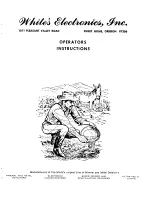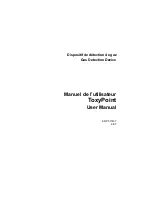
51000-600 / 51000-601
Wireless Combination Smoke, Heat and
Carbon Monoxide Detector
Installation Guide
ATTENTION:
This manual should be read prior to use and retained for further
information.
1.
GENERAL INFORMATION
The Wireless Combination Smoke, Heat and Carbon Monoxide Detector is a
2xCR123A battery powered wireless detector intended for use with a compatible
wireless alarm system. The detector consists of a photoelectric smoke sensor,
thermistor heat sensor and electrochemical carbon monoxide sensor coupled to a
wireless transmitter, which communicates with the control panel. When fire or
carbon monoxide is detected, the detector sounds a loud local alarm and the built-
in transmitter sends a signal to the control panel. The Wireless Combination
Smoke, Heat and Carbon Monoxide Detector contains an integrated fixed 41°F
(5°C) temperature freeze sensor that will send a warning signal based on
temperature detected. This detector is designed to provide protection with 70-foot
spacing capability. The detector can send alarm, tamper and battery condition
messages to the system’s receiver. Refer to the wireless system’s instruction
for the
maximum number of transmitters that can be supported.
The detector has an operational life of 10 years. After 10 years of operation the
detector will provide audio visual trouble indication and must be replaced.
WARNING:
This product is intended for use in ordinary indoor residential areas. It
is not designed to measure compliance with Occupational Safety & Health
Administration (OSHA) commercial and industrial standards.
































